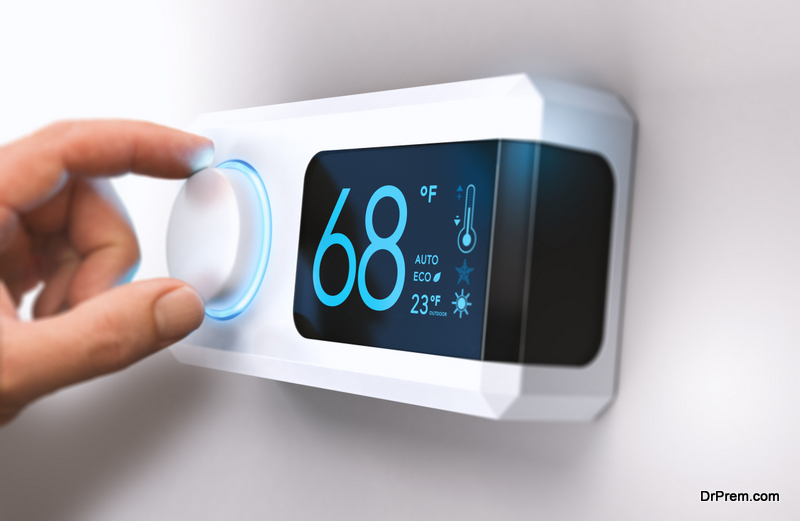Conventional tips tell you to lower your winter heating bills by insulating your windows, floors, and doors. If you’ve done all of that to the best of your ability, and you’re still not satisfied with the results, try these three unconventional tips:
1. Understand your thermostat
The key to lowering your energy usage (and bills) begins with understanding your thermostat. By understanding how your existing heating system works, including your thermostat, you can make informed decisions that will lower your heating bills.
Your thermostat determines when and how much heat is generated and distributed by your furnace. Thermostats aren’t complicated, but can seem nebulous until you learn the secret to how they work.
Most home thermostats are low-voltage, using just 24 volts of electricity. If you’ve got an electric baseboard heater or a wall heater, you might have a line-voltage thermostat that uses 120 or 240 volts.
There are four types of low-voltage thermostats: mercury contact, mechanical contact, digital, and electronic programmable. The first two are analog, and the last two are digital.
Analog thermostats are powered by a bimetallic strip consisting of two metals that expand at a known rate under specific temperatures. This bimetallic strip is a precise instrument that measures changes in temperature, and as it expands and contracts, it opens or closes a contact that triggers your heater to come on.
Digital thermostats use electronic controls to sense the temperature and trigger your heater on or off. However, not all digital thermostats are programmable.
It’s important to understand that the temperature your thermostat uses to turn your heater on or off is the temperature at the location of the thermostat. If you program your thermostat to 72 degrees but your office is still cold, there’s a reason. Your thermostat doesn’t know the temperature of each room. That is, unless you’ve got zone heating.
2. Upgrade to zone heating
Zone heating is an energy-saving upgrade to traditional HVAC systems. With zone heating, heat is generated on-demand and sent only to the rooms where the temperature has dropped. This means each room has its own thermostat and can be set independently. Zone heating saves you money because it won’t generate or deliver heat to the rooms you aren’t using.
The six main benefits to zone heating are the elimination of hot or cold spots, increased temperature comfort, energy savings, versatile options, remote control, and it extends the life of your HVAC unit.
Here’s how zone heating works in a nutshell. Say you’ve got eight rooms in your home. If only your back bedroom needs heat, your system will generate and deliver heat only to that back bedroom. This is a significant difference compared to regular HVAC systems where a large amount of heat is generated and delivered to every room, whether it’s needed or not. If you don’t want heat in a particular room, you have to close the vent, but the heat is still being generated and then wasted. Closing vents might make you more comfortable, but it doesn’t save you money.
3. Insulate your rooms on a priority basis
When insulating the rooms in your home, knock them out on a priority basis. Not all rooms will be a priority to insulate.
For example, we all know someone who likes to keep their bedroom window open while the heater is running. Technically speaking, if a bedroom window is open and the heater is running, if no cold air is moving from that bedroom into the space where your thermostat is, that open window isn’t a concern. The heat will escape from the bedroom, but if the cold air isn’t moving through the house, it’s not going to affect the temperature at the thermostat, so it won’t make your heater stay on longer. Tackle that type of room last.
Another example of a non-priority room is a bathroom in the back of the house that is well-insulated when the door is closed. You might feel the need to shut that bathroom window when the heater comes on, but you don’t have to.
Prioritize insulating rooms that bring drafts through the house and into the space where your thermostat resides. For example, if there’s a bathroom with single-paned windows close to the thermostat, that’s an area you’ll want to insulate first.
It’s all about strategy
Saving money on your heating bills is simply a matter of strategizing the way you produce and distribute heat throughout your home. The ideal solution is to generate only the heat you need, and make sure it’s distributed without leaks along the way.
Article Submitted By Community Writer



